House Gecko
- March 8, 2024
- 0 comment
The house gecko, also known as the common house gecko or Mediterranean house gecko, is a small reptile that has adapted remarkably well to urban environments worldwide. These fascinating creatures are characterized by their slender bodies, large eyes, and ability to climb smooth vertical surfaces with ease. They typically measure between three to six inches in length and come in various colors, ranging from pale yellow to gray or brown, often adorned with darker spots or stripes. House geckos are primarily nocturnal, emerging from their hiding spots at night to hunt for insects and spiders, making them valuable allies in controlling household pests.
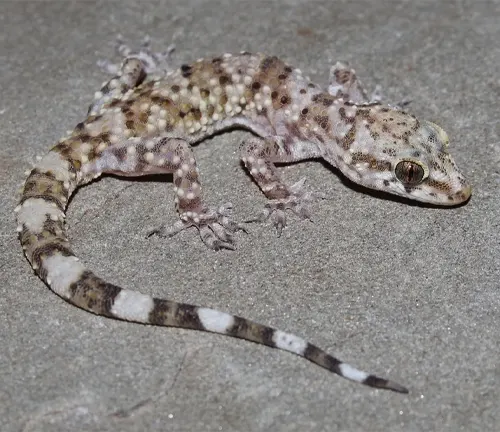
They are commonly found in urban areas, where they inhabit buildings, walls, and ceilings. Despite their small size, house geckos play a significant role in the ecosystem by helping to keep insect populations in check. While they may occasionally find their way indoors, they are harmless to humans and prefer to avoid confrontation whenever possible. Overall, house geckos are fascinating creatures that have successfully adapted to life in the urban jungle, making them a familiar sight in many households around the world.
| Specification | Description |
|---|---|
| Scientific Name | Hemidactylus frenatus |
| Common Names | House gecko, common house gecko, Mediterranean house gecko |
| Size | Typically between 3 to 6 inches in length |
| Coloration | Varied, ranging from pale yellow to gray or brown, often with darker spots or stripes |
| Habitat | Urban areas, buildings, walls, ceilings |
| Activity | Nocturnal; active at night |
| Diet | Insects, spiders, small invertebrates |
| Behavior | Shy, non-aggressive; prefers to avoid confrontation; adept climbers |
| Reproduction | Egg-laying; females lay eggs in secluded locations; hatch after several weeks |
| Lifespan | 5 to 10 years in captivity |
| Conservation Status | Not endangered; potential threats from habitat loss and human activities in native range |
| Role in Ecosystem | Helps control insect populations; beneficial for pest control |
| Interaction with Humans | Generally harmless to humans; may find their way indoors but avoid confrontation |
| Keeping as Pets | Can be kept as pets with proper care and habitat; require varied diet of live insects; lifespan influenced by care |
House geckos, also known as common house geckos or Mediterranean house geckos, are small reptiles that have become a familiar sight in many urban environments around the world. These tiny creatures often go unnoticed during the day, but at night, they emerge from their hiding places to hunt for insects, making them a valuable ally in controlling household pests.
Physical Characteristics
Size and Coloration
House geckos typically range in size from three to six inches in length, with variations among different species and individuals. They have slender bodies, large eyes, and flattened heads, giving them a distinctive appearance. The coloration of house geckos can vary widely, ranging from pale yellow to gray or brown, often with darker spots, stripes, or mottling patterns. These color variations help them blend into their surroundings and provide camouflage while hunting or hiding from predators.
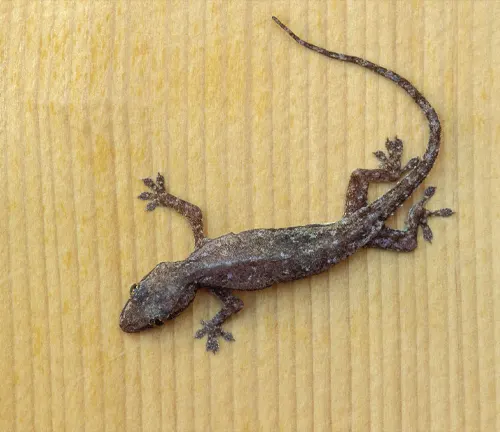
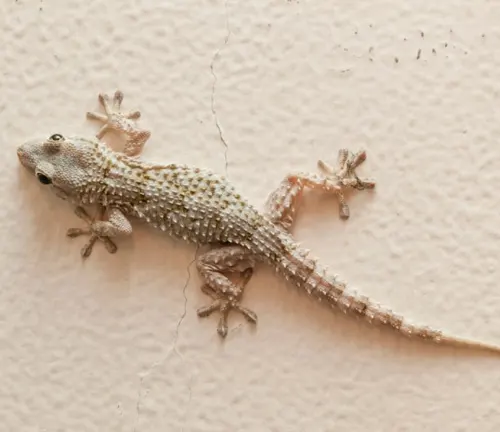
Adaptations for Climbing
One of the most remarkable features of house geckos is their remarkable ability to climb smooth vertical surfaces with ease. They achieve this feat through specialized toe pads on their feet, which are equipped with microscopic hairs called setae. These setae create an adhesive effect, allowing the geckos to cling to surfaces without using suction or sticky substances. The toe pads can conform to irregularities in the surface, maximizing contact and grip strength. This adaptation enables house geckos to navigate various terrains, including walls, ceilings, glass windows, and even upside-down surfaces, with remarkable agility and precision. Their climbing abilities are essential for hunting, escaping predators, and finding shelter in their urban environments.
Habitat and Distribution


House geckos are highly adaptable reptiles that are commonly found in warm climates around the world. They have successfully colonized urban areas, where they inhabit buildings, walls, ceilings, and other man-made structures. While they are native to regions such as the Mediterranean, house geckos have been introduced to many parts of Asia, Africa, the Americas, and Oceania.
In their natural habitat, house geckos prefer warm and humid environments, such as tropical forests, savannas, and coastal areas. However, they have shown remarkable resilience in adapting to urban landscapes, where they find ample food sources and shelter in human dwellings.
House geckos thrive in areas with abundant insect populations, making them particularly common in residential areas with gardens, parks, and agricultural lands nearby. They are also known to inhabit industrial sites, warehouses, and other structures where they can find suitable hiding places and access to food.
Behavior and Diet
Nocturnal Habits
House geckos are primarily nocturnal creatures, meaning they are most active during the night. During the day, they seek shelter in dark, secluded areas to avoid predators and conserve energy. As the sun sets and temperatures drop, house geckos emerge from their hiding places to begin their nightly activities.
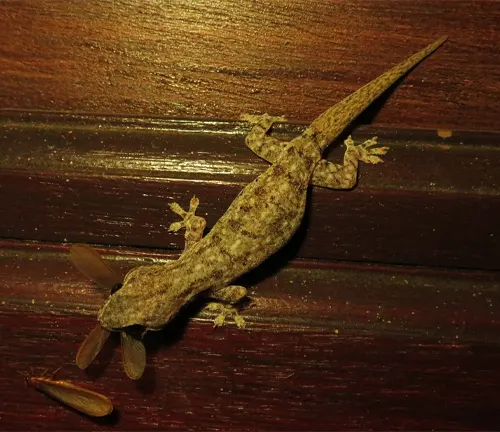
Their nocturnal lifestyle is well-suited to their hunting behavior, as many of their prey, such as insects and spiders, are also active during the night. House geckos use their keen senses of sight and smell to locate their prey in the darkness. They rely on stealth and patience to stalk and capture their food, often waiting for the opportune moment to strike with their sticky tongues.
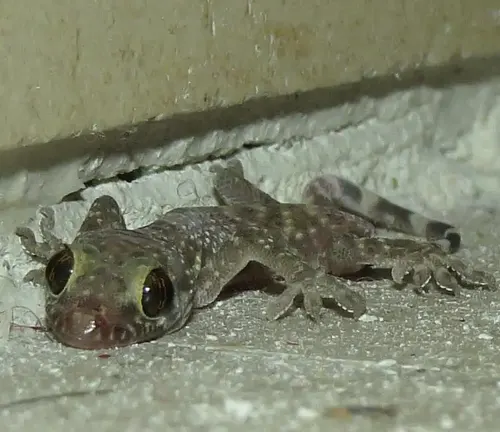
Feeding Behavior
House geckos are opportunistic hunters with a varied diet consisting mainly of small insects and spiders. They are known to consume a wide range of prey, including flies, mosquitoes, cockroaches, ants, and moths. Their feeding behavior is characterized by agility and precision, as they navigate their surroundings in search of food.
When hunting, house geckos use their keen eyesight to spot potential prey and their quick reflexes to capture it. They may employ ambush tactics, waiting in hiding until prey comes within striking distance, or actively pursue moving insects. Once they have targeted their prey, house geckos use their specialized tongues, which are covered in sticky saliva, to snatch it from the air or surfaces.
Reproduction
Mating Rituals
Mating rituals among house geckos involve elaborate displays and behaviors aimed at attracting a mate. During the breeding season, which varies depending on factors such as temperature and habitat, male house geckos become more active in seeking out females. They may engage in territorial behavior, marking their territory with scent markings or engaging in physical displays to assert dominance over rivals.
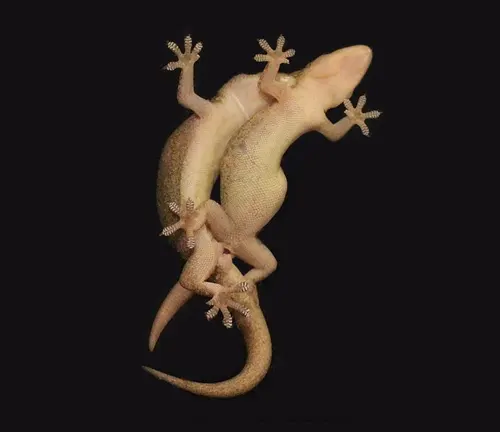
Once a male encounters a receptive female, he initiates courtship rituals to woo her. These rituals can include vocalizations, head bobbing, tail wagging, and physical touch. The male may also engage in chasing or biting behavior to assert his dominance and demonstrate his suitability as a mate.
Female house geckos assess the male’s displays and may choose a mate based on factors such as physical condition, dominance displays, and territory quality. Once mating occurs, the female stores the male’s sperm internally until she is ready to lay eggs.
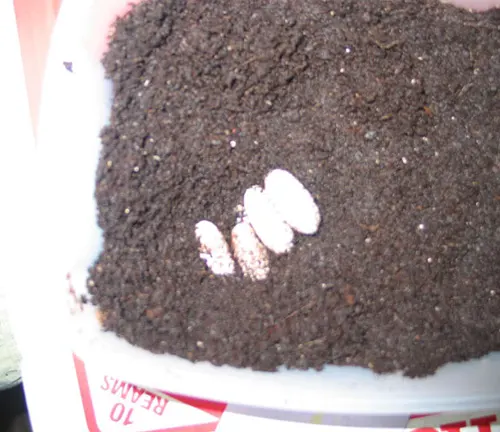
Egg-laying and Incubation
After mating, female house geckos lay eggs in secluded locations within their habitat. Common nesting sites include crevices in walls, behind furniture, or within piles of debris. The female deposits the eggs individually, usually laying several eggs over a period of time.
House gecko eggs have a soft, leathery shell that provides protection while allowing for gas exchange during incubation. The number of eggs laid can vary depending on factors such as the female’s age, size, and environmental conditions.
Once laid, house gecko eggs require proper incubation to develop and hatch successfully. The incubation period varies depending on factors such as temperature and humidity but typically ranges from several weeks to a few months. During this time, the eggs are vulnerable to predation, dehydration, and temperature fluctuations, so the female may exhibit protective behaviors to safeguard her clutch.
Interaction with Humans
House geckos often coexist with humans in urban and suburban environments, where they play a beneficial role in controlling insect populations. Despite their small size, these reptiles can have both positive and negative interactions with humans.
Benefits:
- Pest Control: House geckos feed on a variety of insects and spiders, including common household pests such as cockroaches, mosquitoes, and flies. Their presence can help reduce the need for chemical insecticides and contribute to a healthier living environment.
- Non-Aggressive: House geckos are generally shy and non-aggressive towards humans. They prefer to avoid confrontation and will typically flee if approached or threatened.
- Low Maintenance: Unlike traditional pets, house geckos require minimal care and attention. Once established in a suitable habitat, they can thrive with little human intervention.
Drawbacks:
- Indoor Presence: While house geckos primarily inhabit outdoor spaces, they may occasionally find their way indoors in search of food or shelter. Some people may find their presence unsettling or undesirable.
- Fecal Matter: House geckos produce fecal droppings that can accumulate over time, especially if they establish themselves in large numbers. While not harmful, the presence of gecko droppings may require periodic cleaning to maintain hygiene standards.
- Unwanted Intrusion: In rare cases, house geckos may inadvertently enter human living spaces, such as bedrooms or kitchens, causing surprise or discomfort to residents.
Common Misconceptions
Despite their widespread presence and beneficial role in controlling insect populations, house geckos are often subject to misconceptions and misunderstandings. Here are some common misconceptions about house geckos:
- Venomous: One of the most persistent misconceptions about house geckos is that they are venomous or pose a threat to humans. In reality, house geckos are harmless and non-venomous, and their small size makes them incapable of causing harm to humans.
- Disease Carriers: Contrary to popular belief, house geckos are not carriers of diseases that can affect humans. While they may harbor parasites or bacteria, their presence indoors does not pose a significant health risk to humans.
- Aggressive Behavior: Despite their sometimes startling appearance, house geckos are not aggressive towards humans. They are shy and non-confrontational creatures that prefer to avoid interaction whenever possible.
- House Damage: Some people mistakenly believe that house geckos can cause damage to property or structures. In reality, house geckos are harmless to buildings and do not chew on wires, furniture, or other household items.
- Ineffective Pest Control: While house geckos are skilled hunters of insects and spiders, they are not a guaranteed solution to pest problems. Their presence may help reduce insect populations, but they are unlikely to eliminate infestations entirely.
- Invasion of Privacy: Although house geckos may occasionally find their way indoors, they are not deliberately invading human living spaces. They are simply seeking food, shelter, or a suitable environment for breeding.
Keeping House Geckos as Pets
House geckos can make fascinating and low-maintenance pets for reptile enthusiasts. However, proper care and habitat are essential to ensure their health and well-being. Here are some key considerations for keeping house geckos as pets:
Housing Requirements
- Enclosure: Provide a secure and escape-proof enclosure for your house gecko. A glass terrarium with a screen top works well, ensuring adequate ventilation while preventing escapes.
- Substrate: Use a substrate such as coconut fiber, reptile carpet, or paper towels on the enclosure floor. Avoid substrates that could be ingested and cause digestive issues.
- Hiding Places: Include hiding spots such as cork bark, rocks, or artificial caves to provide security and shelter for your gecko.
- Climbing Structures: House geckos are adept climbers and benefit from vertical space. Provide branches, vines, or artificial plants for climbing and exploration.
Feeding and Care
- Diet: House geckos are insectivores and require a diet consisting primarily of live insects. Offer a variety of appropriately sized prey, including crickets, mealworms, and roaches. Dust insects with calcium and vitamin supplements before feeding.
- Water: Ensure access to clean, fresh water at all times. Use a shallow dish or a water bottle with a dripping mechanism to prevent drowning.
- Temperature and Lighting: Maintain a temperature gradient in the enclosure, with a warm basking spot ranging from 85 to 90 degrees Fahrenheit (29 to 32 degrees Celsius) and a cooler area around 75 degrees Fahrenheit (24 degrees Celsius). Use a UVB light to provide necessary ultraviolet radiation for calcium metabolism.
- Humidity: House geckos require moderate humidity levels ranging from 60% to 80%. Use a hygrometer to monitor humidity levels and mist the enclosure as needed to maintain proper humidity.
Health Concerns
- Parasites: House geckos may be susceptible to internal and external parasites. Monitor your gecko for signs of illness, such as weight loss, lethargy, or abnormal behavior, and consult a veterinarian if necessary.
- Shedding: Provide a moist hide box to aid in shedding, as house geckos shed their skin periodically as they grow. Ensure proper hydration to facilitate healthy shedding.
- Hygiene: Keep the enclosure clean by removing feces and uneaten food regularly. Clean and disinfect the enclosure and accessories periodically to prevent bacterial or fungal growth.
Conservation Status
Although house geckos are not considered endangered, habitat loss and human activities pose potential threats to their populations, particularly in their native range. Conservation efforts aimed at preserving their natural habitats are crucial for their long-term survival.
Different Species
Asian House Gecko
(Hemidactylus frenatus)
Also known as the common house gecko, it is one of the most widespread species found in urban areas across Asia, Africa, and the Americas. It has adapted well to human habitation and is known for its ability to climb walls and ceilings.


Indo-Pacific Gecko
(Hemidactylus garnotii)
This species is native to Southeast Asia and has also been introduced to other parts of the world, including Hawaii and Florida. It shares similar characteristics with the Asian house gecko and is commonly found in urban and suburban areas.
Turkish Gecko
(Hemidactylus turcicus)
Native to the Mediterranean region, the Turkish gecko is another species commonly encountered in urban environments. It has distinctive large eyes and a slender body, similar to other house geckos.
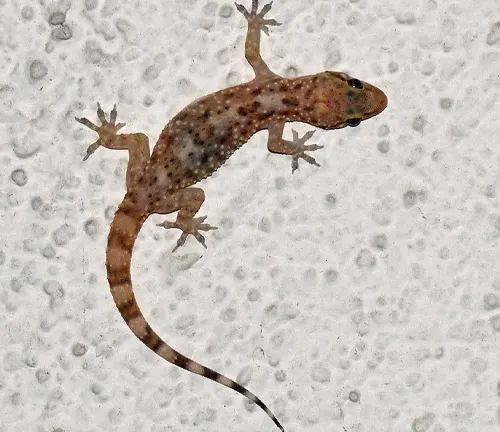
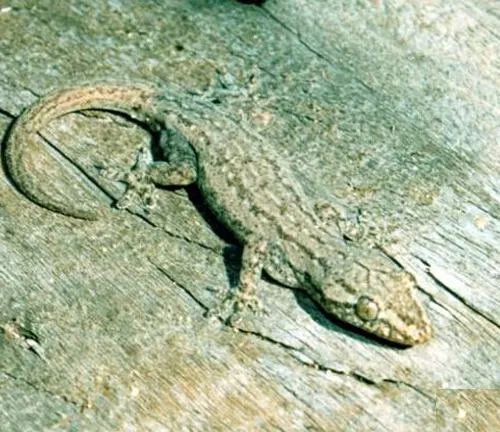
Australian House Gecko
(Gehyra dubia)
Found in Australia and parts of Southeast Asia, this species is smaller in size compared to other house geckos. It is often found in urban and rural areas, where it preys on insects and other small invertebrates.
Pacific House Gecko
(Hemidactylus pacificus)
Native to the Pacific Islands, including Hawaii, this species has also been introduced to other regions. It is known for its ability to thrive in diverse habitats, including urban areas, where it helps control insect populations.
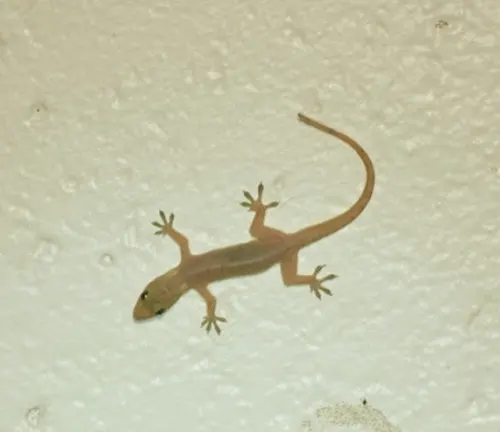
Frequently Asked Questions (FAQs)
- Are house geckos dangerous to humans?
House geckos are generally harmless to humans. They are shy and non-aggressive, preferring to avoid confrontation. - Can house geckos bite?
While house geckos may bite if they feel threatened, their bites are not venomous or harmful to humans. - How do I get rid of house geckos in my home?
House geckos can be deterred by sealing cracks and crevices in your home, reducing insect populations, and removing sources of moisture. - What do house geckos eat?
House geckos primarily feed on insects such as flies, mosquitoes, and cockroaches. They may also consume spiders and other small invertebrates. - Do house geckos make noise?
House geckos are generally silent, but they may emit chirping or clicking sounds during mating rituals or territorial disputes. - Can house geckos be kept as pets?
Yes, house geckos can make fascinating pets for enthusiasts willing to provide proper care and habitat. - Do house geckos require special lighting?
House geckos are nocturnal and do not require special lighting. However, providing a day-night cycle with a natural light source can benefit their overall health. - What temperature do house geckos need?
House geckos thrive in temperatures ranging from 75 to 85 degrees Fahrenheit (24 to 29 degrees Celsius) during the day and slightly cooler at night. - Do house geckos carry diseases?
While house geckos themselves are not carriers of diseases, improper hygiene in their enclosure can lead to health issues. - How long do house geckos live?
In captivity, house geckos can live for around 5 to 10 years with proper care. - Can house geckos change their color?
Yes, house geckos may change their color slightly depending on factors such as temperature, humidity, and mood. - Are house geckos territorial?
House geckos may exhibit territorial behavior, particularly during mating season, but they are generally not aggressive towards humans.


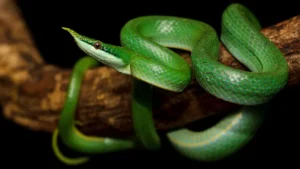
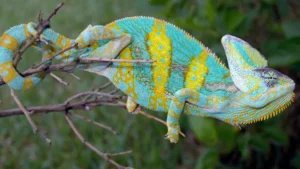
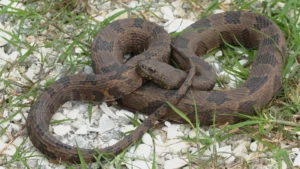
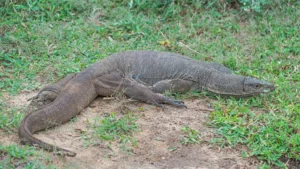
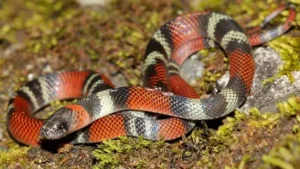

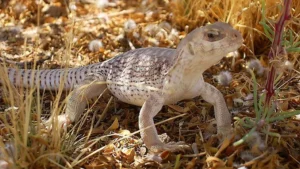





Leave your comment